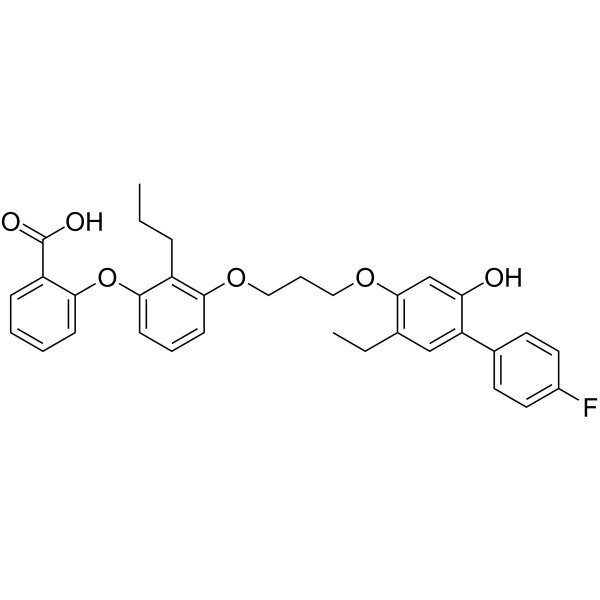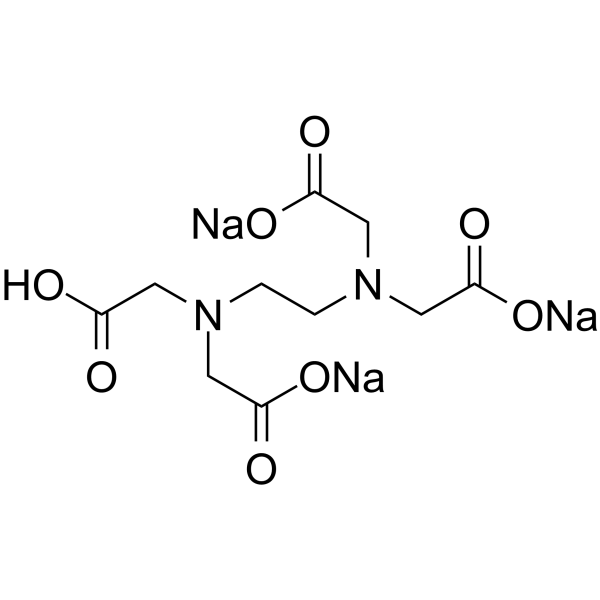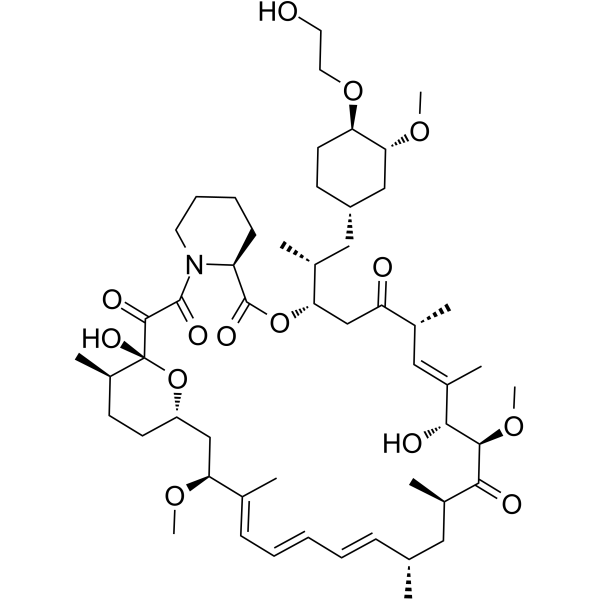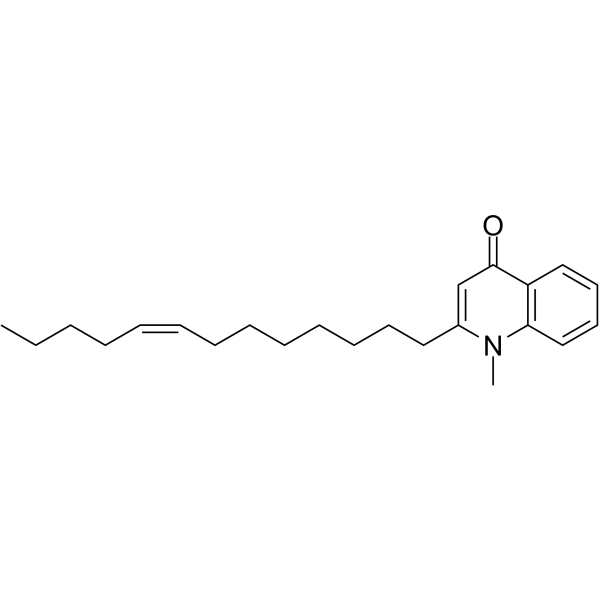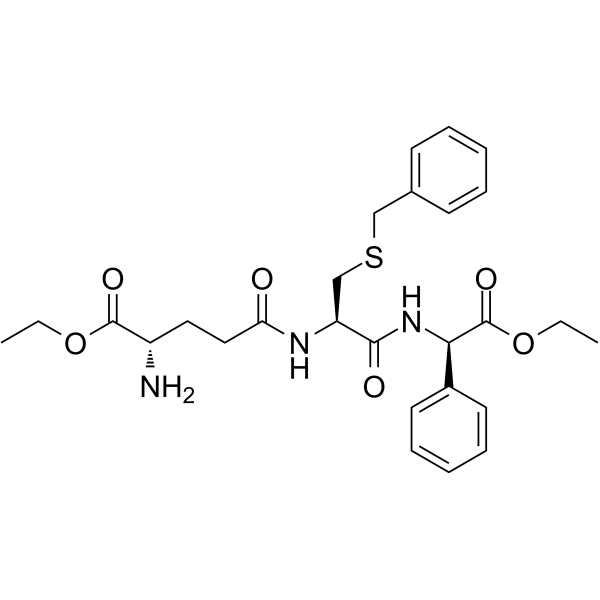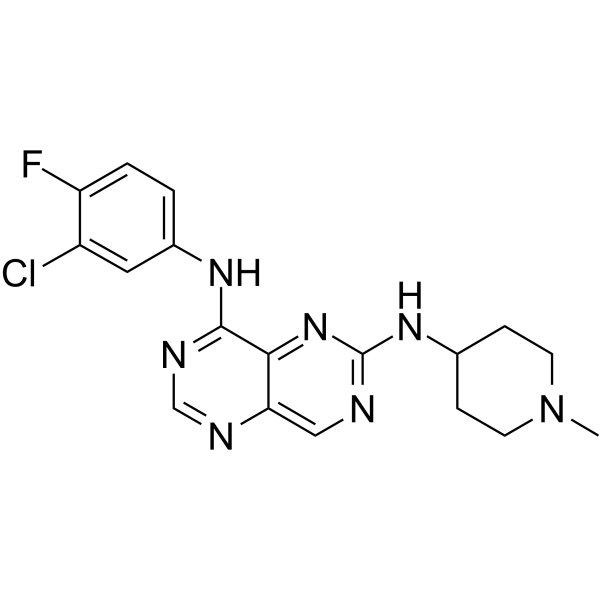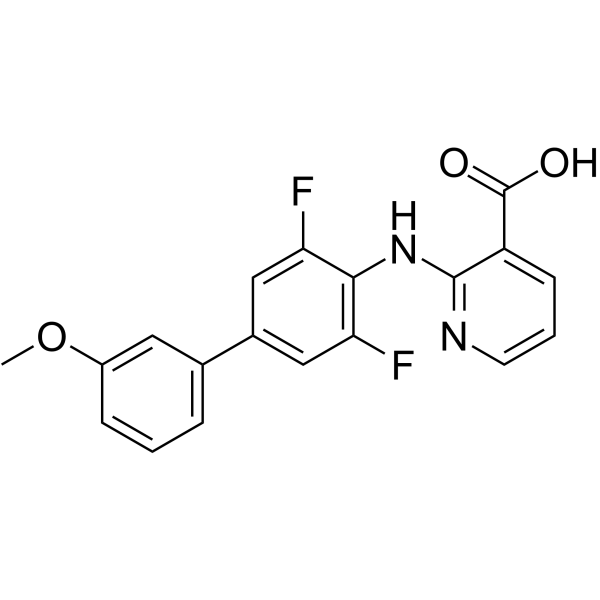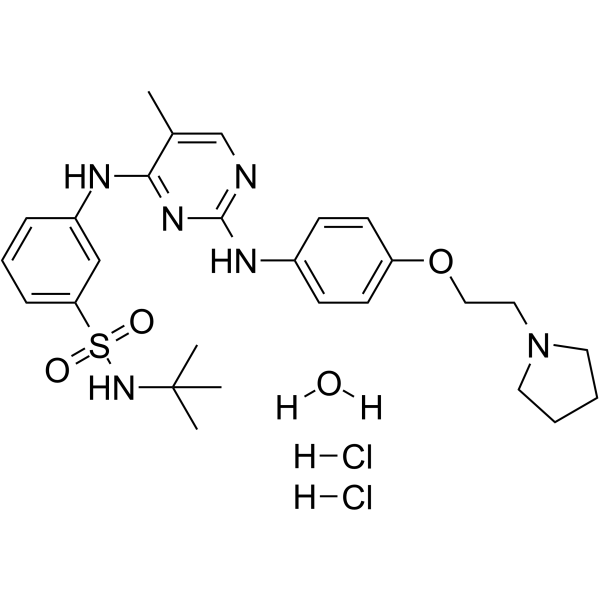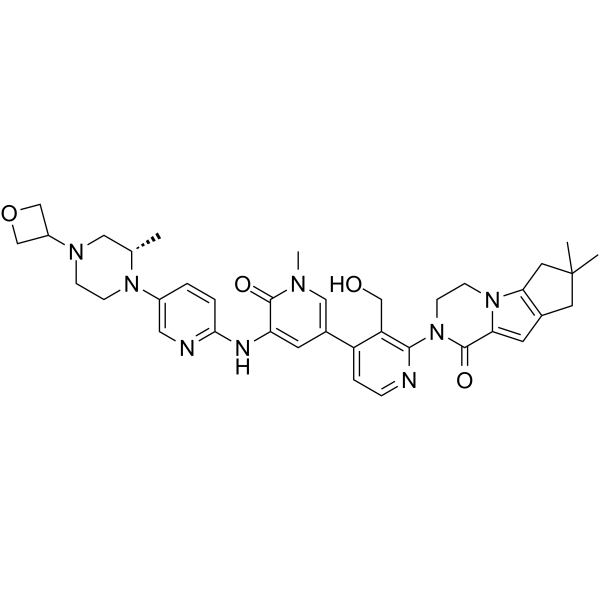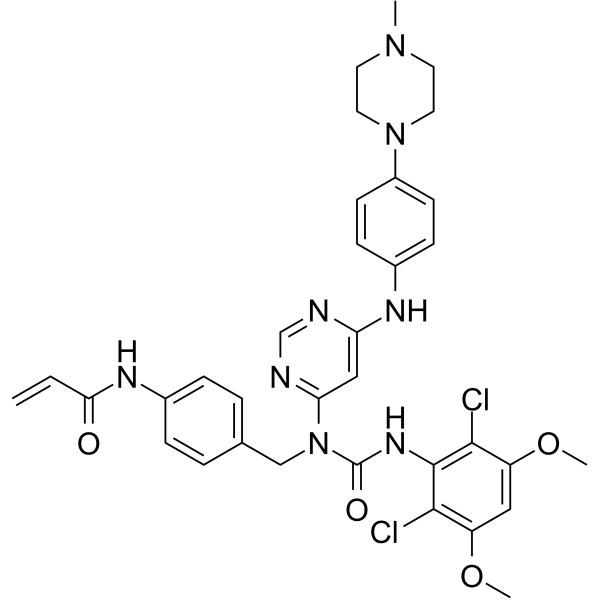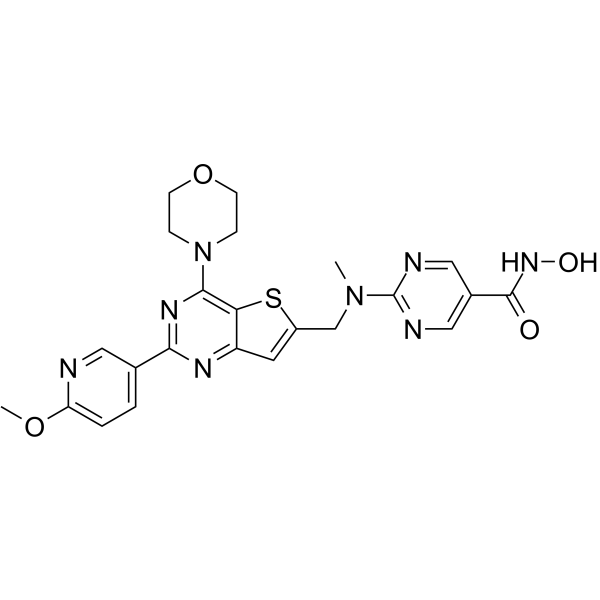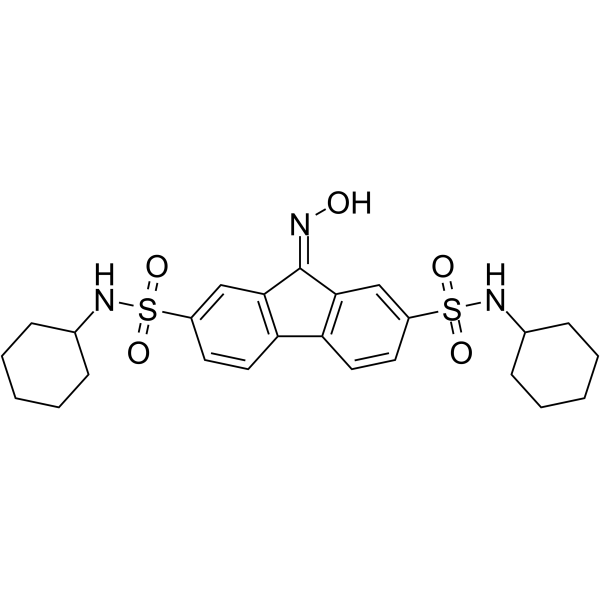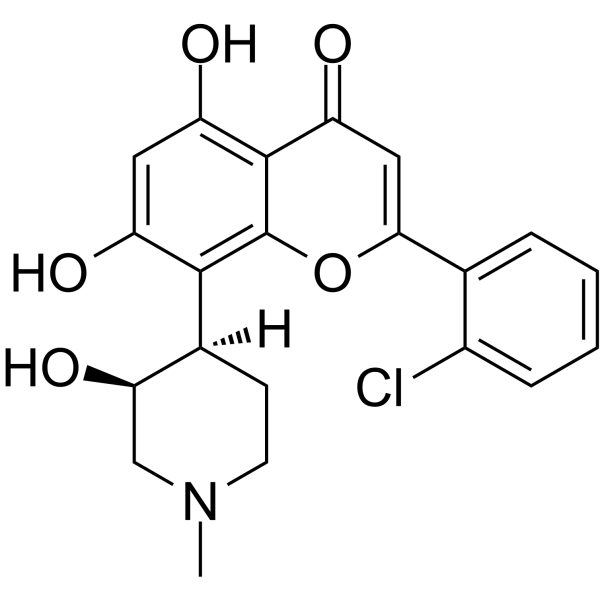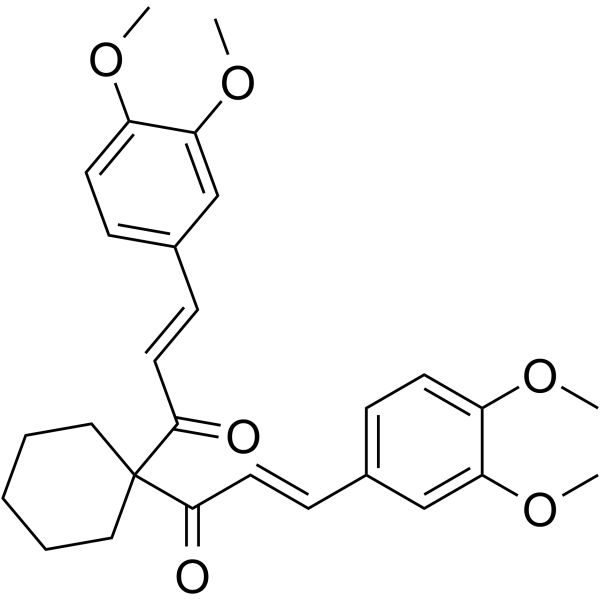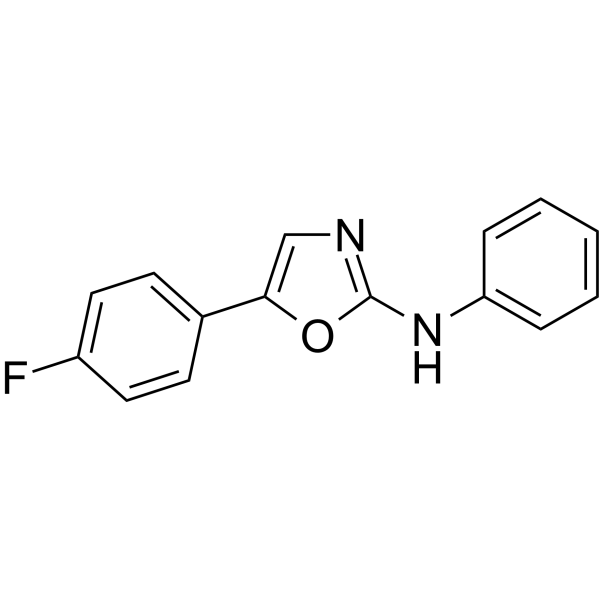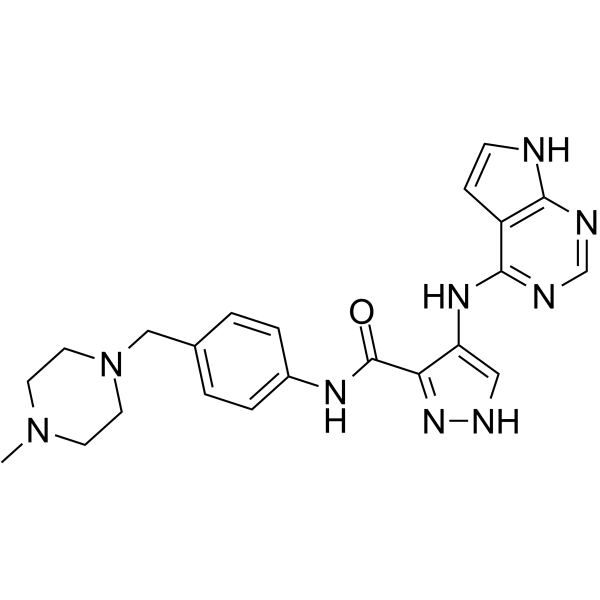|
BP10826
|
Erlotinib hydrochloride
|
|
|
|
|
Erlotinib is an EGFR inhibitor (IC50: 2 nM). It is used for the treatment of non-small cell lung cancer.
|
|
BP10071
|
Esculentic acid
|
|
|
|
|
Esculentic acid has anti-inflammatory effect, it has protective effects against LPS-induced endotoxic shock may be mediated, at least in part, by regulation the release of inflammatory cytokines and mediators, and protein expression of COX-2 in mice.
|
|
BP10672
|
Etalocib
|
|
|
|
|
Etalocib is a novel diaryl ether carboxylic acid derivative, is a selective and potent inhibitor of the lipoxygenase pathway either via antagonism of the leukotriene B4 (LTB4) receptor or directly through 5'-lipoxygenase. It has antineoplastic activities.
|
|
BP10597
|
Ethylenediaminetetraacetic acid trisodium salt
|
|
|
|
|
Edetate Trisodiumis used to bind metal ions in the chelation therapy.
|
|
BP10661
|
Everolimus
|
|
|
|
|
Everolimus is a potent mTOR inhibitor that binds to FKBP-12. It is used alone or in combination with calcineurin inhibitors.
|
|
BP10617
|
Evocarpine
|
|
|
|
|
Evocarpine shows antimycobacterial, and vasorelaxant effects, it can inhibit Ca2+ influx through voltage-dependent calcium channels.
|
|
BP10735
|
Ezatiostat
|
|
|
|
|
Ezatiostat is a tripeptide analog of glutathione that can selectively inhibit GSTP1-1 catalytic activity.
|
|
BP10910
|
Falnidamol
|
|
|
|
|
Falnidamol (BIBX 1382) is a selective and orally active inhibitor of EGFR tyrosine kinase (IC50: 3 nM).
|
|
BP10061
|
Farudodstat
|
|
|
|
|
ASLAN003 is an orally active and potent inhibitor of DHODH (Human Dihydroorotate Dehydrogenase) with antitumor activity. It has the potential to be a first-in-class candidate in AML.
|
|
BP10440
|
Fedratinib hydrochloride hydrate
|
|
|
|
|
Fedratinib hydrochloride hydrate is a potent, selective, ATP-competitive and orally active JAK2 inhibitor.
|
|
BP10534
|
Fenebrutinib
|
|
|
|
|
Fenebrutinib is a selective and noncovalent Btk inhibitor (Ki: 0.91 nM).
|
|
BP10160
|
Ferulic Acid
|
|
|
|
|
Ferulic Acid is a highly abundant phenolic phytochemical and a type of organic compound found in the Ferula assafoetida L. or Ligusticum chuanxiong.It can be absorbed by the small intestine and excreted through the urine.
|
|
BP10705
|
FIIN-3
|
|
|
|
|
FIIN-3 is an irreversible inhibitor of FGFR.
|
|
BP10393
|
Fimepinostat
|
|
|
|
|
CUDC-907 is an orally bioavailable inhibitor of both phosphoinositide 3-kinase (PI3K) class I and pan-histone deacetylase (HDAC) enzymes, with potential antineoplastic activity. Upon oral administration, CUDC-907 inhibits the activity of both PI3K class I isoforms and HDAC, thereby preventing the activation of the PI3K-AKT-mTOR signal transduction pathway that is often overactivated in many cancer cell types.
|
|
BP10111
|
FIN56
|
|
|
|
|
FIN56 is a specific inducer of ferroptosis.
|
|
BP10570
|
Flavopiridol
|
|
|
|
|
Flavopiridol (Alvocidib) competes with ATP to inhibit CDKs including CDK1, CDK2, CDK4 and CDK6 with IC50 of ~ 40 nM. It is 7.5-fold more selective for CDK1, 2, 4, 6 versus CDK7. Flavopiridol is initially found to inhibit EGFR and PKA. Phase 1/2.
|
|
BP10259
|
FLLL32
|
|
|
|
|
FLLL32 is an effective JAK2/STAT3 inhibitor (IC50 of <5 μM).
|
|
BP10970
|
FLT3-IN-10
|
|
|
|
|
FLT3-IN-10 (compound 7c) is a potent inhibitor of FMS-like tyrosine kinase 3 (FLT3). FLT3-IN-10 shows the potential for the treatment of FLT3-mutated acute myeloid leukemia (AML).
|
|
BP10521
|
FN-1501
|
|
|
|
|
FN-1501 is a potent FLT3 and CDK inhibitor (IC50s: 2.47, 0.85, 1.96, and 0.28 nM for CDK2/cyclin A, CDK4/cyclin D1, CDK6/cyclin D1 and FLT3, respectively). FN-1501 also has anticancer activity.
|
|
BP10733
|
Fosbretabulin Disodium
|
|
|
|
|
Fosbretabulin (Combretastatin A4 Phosphate (CA4P)) Disodium, a water-soluble prodrug of Combretastatin A4 (CA4), is a microtubule-targeting agent that binds β-tubulin (Kd: 0.4 μM). Fosbretabulin Disodium inhibits the polymerization of tubulin (IC50: 2.4 μM), and also disrupts tumor vasculature.
|


